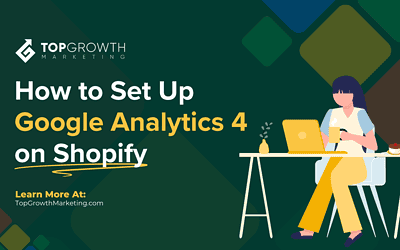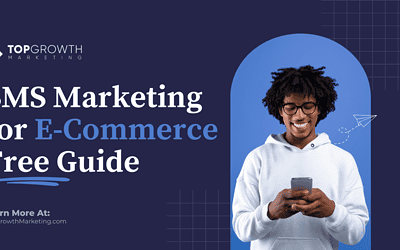Let’s take a look at the awesome BlitzGrowth podcast episode with Greg Rog.
Although mostly aimed at content creators, there’s a lot of stuff Greg does that e-commerce brands and store owners might want to apply to their businesses as well.
As an e-commerce agency owner first, I will explore valuable lessons learned from speaking with Greg about building and scaling online educational businesses and how these lessons can be applied to the e-commerce industry.
Key Takeaways From The Episode
- The importance of teaching and sharing knowledge
- The benefits of cohort-based approaches (yes, even for e-commerce)
- The power of automation and no-code tools
Let’s dive into each of these points and see how they can be applied to the world of e-commerce.
The Importance of Teaching and Sharing Knowledge
Greg’s main focus is creating engaging online courses.
And whether it’s UX/UI, coding, or even marketing, these are skills that can drastically improve a person’s skill set and impact their lives.
Leveraging this kind of approach for e-commerce isn’t obvious but it can be done.
One of the more direct paths is to use a similar approach to diversify your revenue. Think about creating a store versus creating a brand.
If you’re creating a brand, think of ways to educate your customers. Not only with regard to your products but in a broader sense to provide value.
HubSpot has the HubSpot Academy which provides world-class education in the field of inbound marketing. And guess who their customers are…
That’s right, marketers for the most part!
So, HubSpot gets to establish itself as one of the foremost authorities for its customers.
The Benefits of Cohort-Based Learning
Cohort-based learning is highly efficient in creating a sense of community and increasing engagement among learners through organized meetups, live sessions, and group discussions.
In the context of e-commerce, implementing similar community-building strategies can create a loyal customer base and facilitate organic brand promotion.
By organizing live events, webinars, or even creating exclusive online communities, you can create a platform for customers to connect with each other and share their shopping experiences, increasing retention and brand loyalty.
A cohort, for our purposes, is just a group of people who have self-selected into a category.
And that category can be “people who like your product”.
To leverage a cohort-based approach for enhancing e-commerce performance, you could implement a “Community Shopping” model. 🛒
🛒 Example: Segmenting your customers into cohorts based on shared interests or behaviors, then creating a dedicated platform where these cohorts can interact, share product recommendations, and participate in discussions.
Incentivizing these activities with exclusive deals, early access to new products, or special events can foster a sense of community and exclusivity.
Encourage more activity through cohort-based challenges or competitions.
This strategy not only aids in boosting sales and customer retention but also enhances customer engagement.
It allows customers to feel a stronger connection to your store and their cohort, leading to increased loyalty and repeat purchases.
The insights gathered from cohort interactions can also guide your product development and marketing strategies, ensuring they align with your customers’ preferences.
If you can entice your customers with the right value, they’ll gladly display their interest in your products. Then, it’s a matter of nurturing that interest.
The Power of Automation and No-Code Tools
Automation and no-code tools, such as Zapier, Integromat, and Airtable, have revolutionized the way online businesses operate by streamlining their day-to-day tasks.
For an e-commerce business, automating tasks such as inventory management, order processing, and marketing can save countless hours while also removing the potential for human error.
No-code tools make it easier than ever to create customized workflows, allowing e-commerce businesses to adapt quickly to market trends and evolve their brands.
This is a no-brainer for e-commerce.
We’re big proponents of automating anything we can. And, the best part is that great e-commerce platforms like Shopify make it really easy.
If there’s a time-consuming and tedious process that you need to perform over and over, there’s a good chance you’ll find an app to automate it in the Shopify app store.
📖 Further reading: In a separate article, we’ve written about e-commerce tools and Shopify apps that can help streamline, automate, and grow your online store.
Additional Insights for the E-commerce Industry
- Proper pricing: Understanding the value of your products and pricing them accordingly is crucial to succeed in e-commerce. Make sure to charge your worth and review your pricing strategy regularly.
- Collaboration and networking: Attend conferences, join communities, and engage in meaningful partnerships to build a strong support network. This can lead to learning more about your industry while also creating opportunities to collaborate and expand your business.
- Resilience and continuous innovation: Building an e-commerce business requires a strong attitude, resilience, and the ability to innovate consistently. Stay ahead of the competition by regularly studying industry trends and implementing changes to your brand and product offerings.
So, as you can see, anywhere you find success, there are lessons to be learned.
Applying cross-industry lessons
By sharing valuable knowledge, creating exclusive communities for customers, and utilizing automation and no-code tools, e-commerce businesses can thrive in today’s competitive market.
It’s essential to stay adaptable, resilient, and open to change as you build and grow your e-commerce empire.







0 Comments